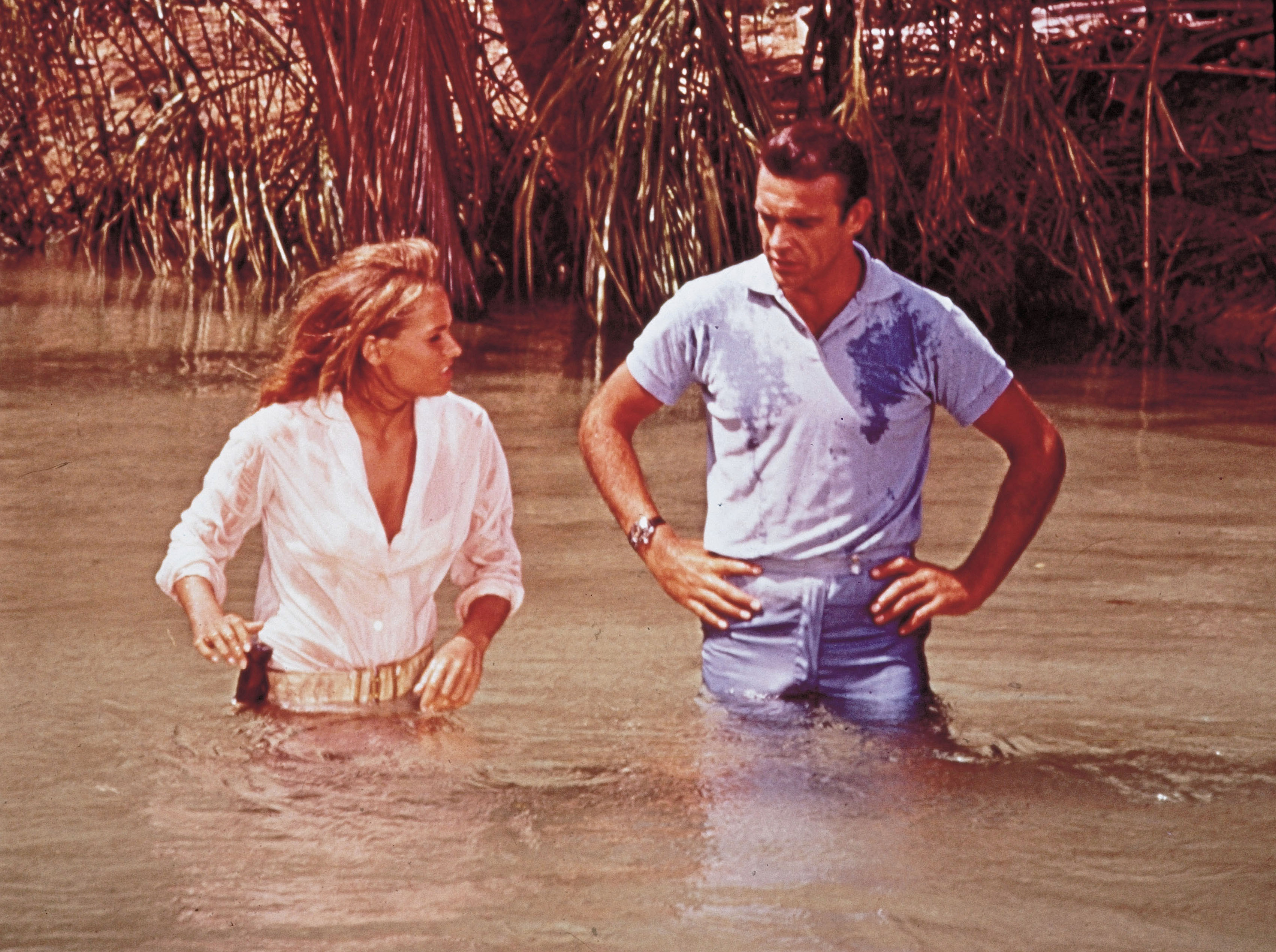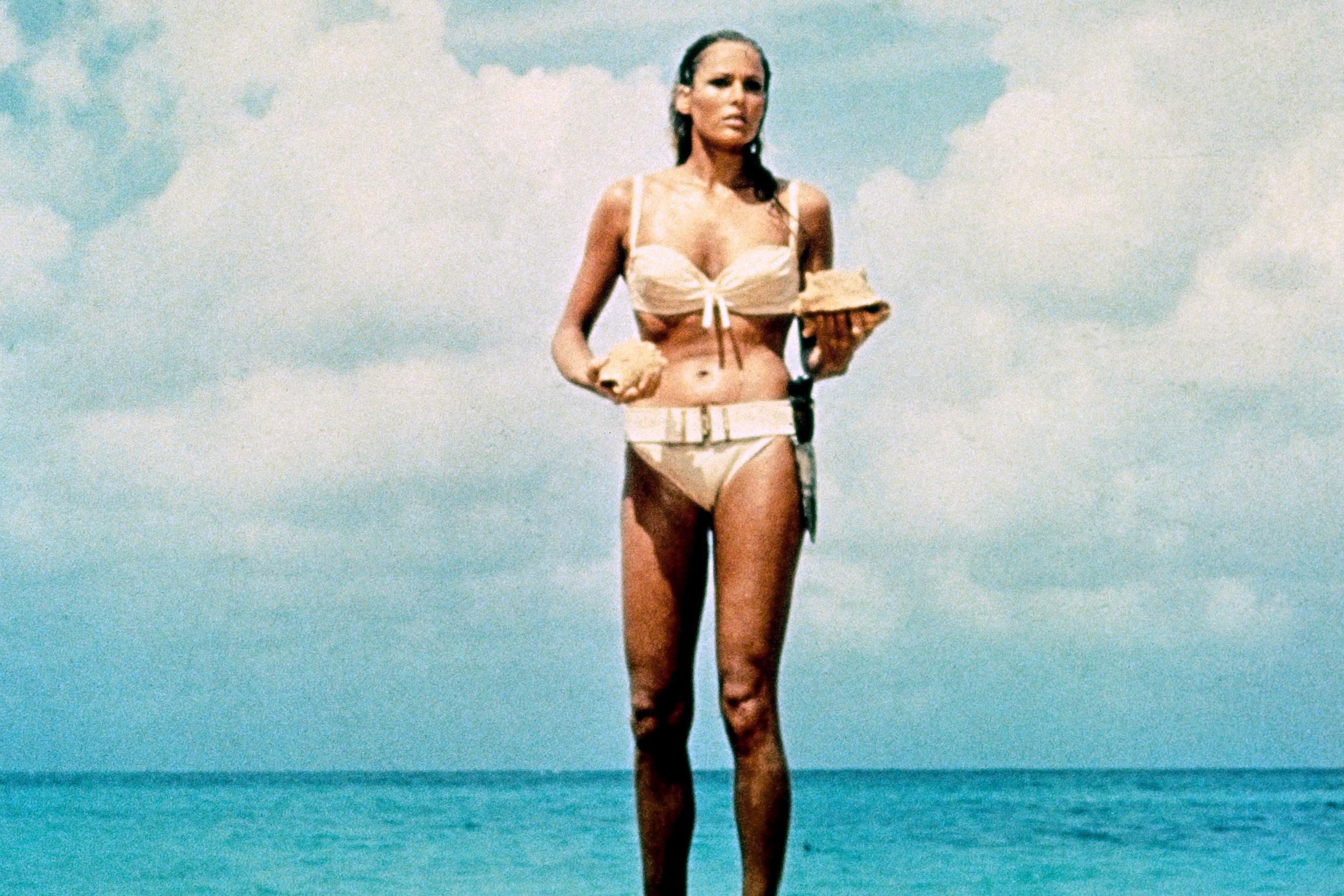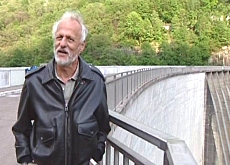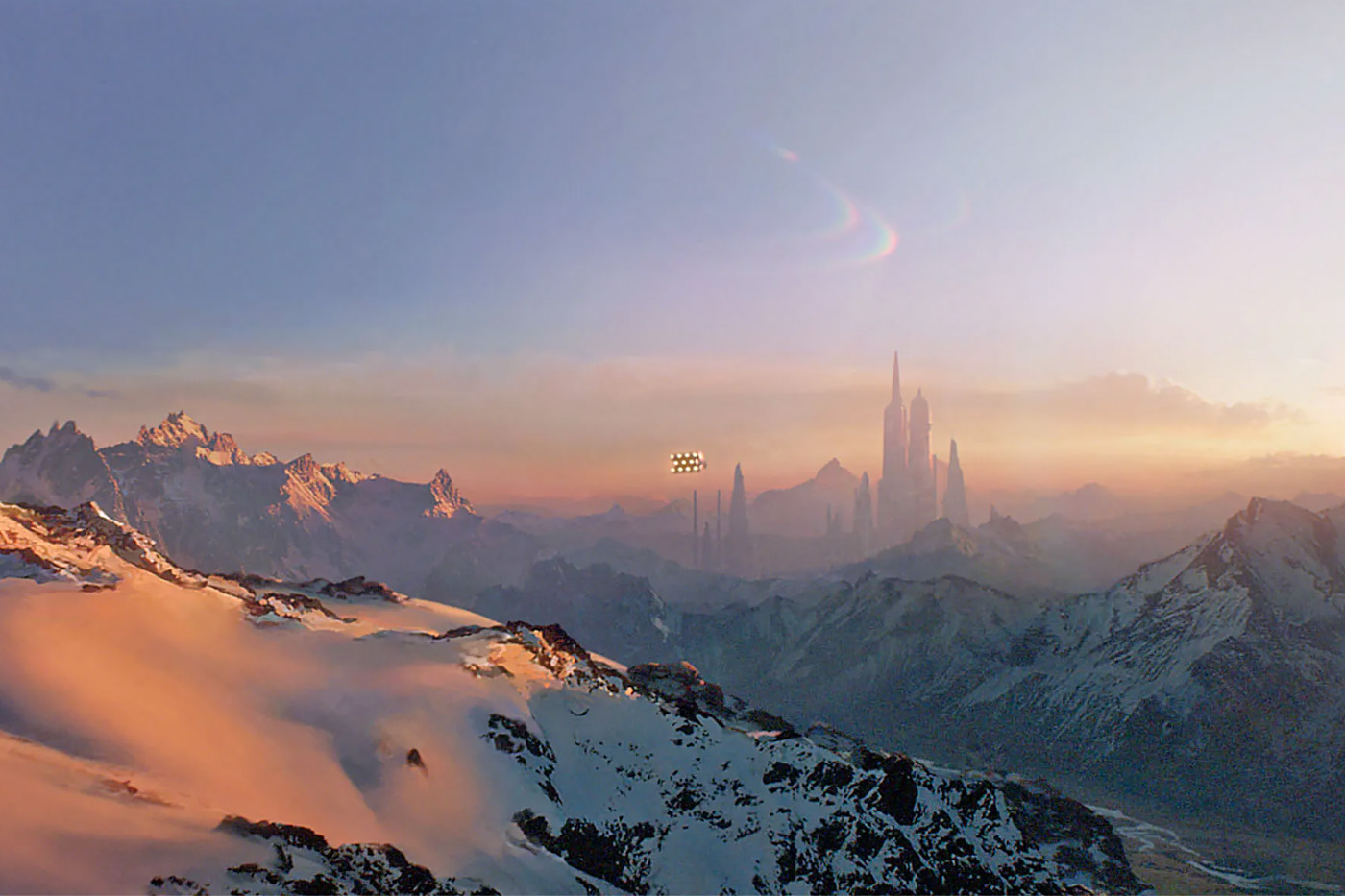James Bond: half-Swiss, totally profitable

Fifty years after saving the world from Dr Julius No, James Bond is still shaking box office tills and stirring audiences around the world. But without Switzerland, the films – and Bond himself – would be very different.
On October 5, 1962, a young girl from Ostermundigen, a suburb of Bern, had cinemagoers spitting out their popcorn when she emerged from the sea with a knife tucked into a skimpy white bikini.
The iconic image of Ursula Andress, whose character Honey Ryder collected and sold seashells on the Jamaican seashore, meant the Swiss actress, despite being dubbed because of her heavy Swiss-German accent, is today often considered the quintessential Bond Girl. Adjusted for inflation, the film took $458 million (SFr437 million).
Half a century, 22 films and six actors later, the James Bond franchise shows no signs of slowing down, despite challenges from other action stars such as Jason Bourne.
Later this month, Bond returns in Skyfall and will try to beat the $586 million recouped by 2008’s Quantum of Solace, directed by Swiss-raised Marc Forster.
But the links between 007 and Switzerland go deeper than the odd actress or director. Bond is, after all, half-Swiss: his mother, Monique Delacroix, came from canton Vaud (before dying in a climbing accident in Chamonix).
“One story says Fleming had a girlfriend in Geneva – he spent some time in Switzerland and Austria where he learnt to ski – and this was then worked into his novels,” said Daniel Haberthür, president of the James Bond Club Switzerland.
Fleming, who wrote 12 Bond novels between 1952 and his death in 1964 aged 56, certainly used his own upbringing for his creation, with Bond alluding to briefly attending Geneva University, as had Fleming.
Haberthür and 160 other fans – two-thirds of whom are male – meet up from time to time and “swap stories, discuss scenes and so on”. Thirty of them were extras in Quantum of Solace when a scene was filmed in neighbouring Bregenz.
“Some of us are fans of [current Bond] Daniel Craig, others are fans of the locations, others love the cars – the interest covers a wide range of things. But ultimately it’s all about James Bond,” he told swissinfo.ch.

More
James Bond: ‘It’s the double whammy of sex and violence’
Tourism boost
Switzerland has been the setting of some of the most memorable Bond scenes, such as George Lazenby pushing a baddie into a Schilthorn snow-blower in On Her Majesty’s Secret Service (1969). Or the record-setting bungee jump off the Verzasca Dam in Ticino at the start of GoldenEye (1995).
Daniela Bär from Switzerland Tourism said the Bond films have had a considerable impact on both resorts.
“Original film locations are a really popular destination for film fans and the Schilthorn and Verzasca Dam are no exceptions,” she told swissinfo.ch.
“The choice of both locations matches our way of thinking as it shows Switzerland from its best side: the Schilthorn as a winter original and the Verzasca Dam as a symbol of ‘Experience Switzerland’.”
Indeed, both locations continue to profit from the Bond connection: for SFr27.50 ($28.80) you can tuck into a “James Bond 007 Breakfast Buffet” at the revolving Piz Gloria restaurant at the top of the Schilthorn (Martini not included).
Exoticism
However, Switzerland itself is rarely mentioned apart from in a shady “gnomes of Zurich” sense.
There is a passing reference to the dormant Jewish accounts affair in The World is Not Enough (1999) when the money man says “I’m just trying to return the money to its rightful owner” and Bond replies “And we know how hard that is for a Swiss banker”.
“Obviously Switzerland was not a frontline in the Cold War, nor did it have the appeal of exoticism which was the alternative,” said Jeremy Black, a professor of history at Exeter University in Britain and author of The Politics of James Bond: From Fleming’s Novels to the Big Screen.
“Given that the stars in a lot of the early films were the sharks and underwater filming, there was a limit to what you could do with Switzerland.”
Black said part of the attraction of Bond was that he travelled to colourful and unfamiliar places, the West Indies in particular.
Strengths and weaknesses
But while Switzerland might be lacking in coral reefs, it does have strengths of its own.
“It would be great to see a car chase through the Old Town of Zurich, but it’s all about showing things that are unique – and that’s the Swiss Alps,” Haberthür said.
“They look fantastic on film. There weren’t any ski scenes with Connery – the first ones were in On Her Majesty’s Secret Service and then with Roger Moore and they were almost all shot in Switzerland.”
Moore, who used to live in Gstaad and now has a winter home in Crans-Montana, left the stunt work to experts in The Spy Who Loved Me (1977), whose opening chase scene was filmed in St Moritz (although the spectacular cliff jump was filmed on Baffin Island in the Canadian territory of Nunavut).
The Bond circus also travelled to Switzerland in From Russia with Love (1963), A View to a Kill (1985) and Goldfinger (1964).
“Fleming wrote Goldfinger after the Second World War, when Switzerland’s image had been damaged. That was where everyone hoarded their gold,” Haberthür said.
“So the country’s image as a gold-smuggling centre can partially be traced back to Ian Fleming.”
But while Swiss tourism officials will be toasting Bond for another 50 years, workers in the financial sector still have their work cut out to convince Hollywood scriptwriters they are not all scruple-free money-grabbers.
As Bond tells dodgy banker Lachaise in The World is Not Enough – with a heavy dose of irony – “if you can’t trust a Swiss banker, what’s the world come to?”
February 21: The Physicists, a satirical drama by Friedrich Dürrenmatt, is premiered in Zurich.
March 24: Death of Auguste Piccard, physicist, inventor and explorer – and inspiration for Professor Calculus in Tintin.
April 1: 65% of Swiss voters reject an initiative to ban nuclear arms.
April 10: Maximilian Schell wins Best Actor Oscar for Judgment at Nuremberg.
June 7: Switzerland are knocked out of the football World Cup in Chile by Italy.
June 21: Birth of video artist Pipilotti Rist.
August 9: Death of poet and writer Hermann Hesse.
August 13: First complete climb of the west face of the Matterhorn.

In compliance with the JTI standards
More: SWI swissinfo.ch certified by the Journalism Trust Initiative












Join the conversation!